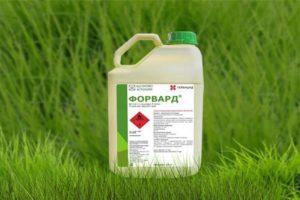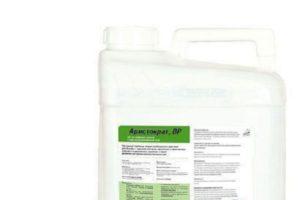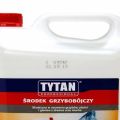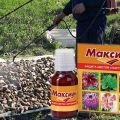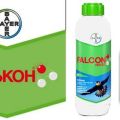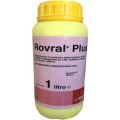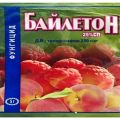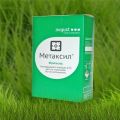Description and instructions for use of the fungicide Uniform
Fruit and vegetable crops often suffer from rot and other dangerous ailments. To protect planted plants from diseases, they must be regularly treated with fungicidal compounds. One of the most effective products is "Uniform", which is used to process fruits and vegetables. However, before using it, you need to study the description of the fungicide "Uniform".
Content
- 1 Composition, release form and purpose of the fungicide "Uniform"
- 2 How the drug works
- 3 Main pros and cons
- 4 Consumption rate for different plants
- 5 How to prepare a working solution
- 6 Instructions for the use of the fungicide
- 7 Mechanism of action
- 8 Drug toxicity
- 9 Compatibility with other products
- 10 Terms and conditions of storage of funds
- 11 Are there any analogues
- 12 Conclusion
Composition, release form and purpose of the fungicide "Uniform"
"Uniform" is a systemic type of fungicide that is most often used to treat potato bushes. Regular spraying of seedlings will protect them from the appearance and further development of rot. In the manufacture of the drug, substances such as mefenoxam and azoxystrobin were used. These components are quite effective and therefore no more than five liters of the drug are consumed per hectare.
The agent is produced and sold in liquid form in small bottles with a volume of 150-250 milliliters.
How the drug works
Before using "Uniform", you need to understand how it works. The action of the drug begins 5-10 minutes after the treatment. The components of the fungicide penetrate into plants and protect them from the development of pathogenic microelements. Part of the composition remains on the surface and forms a protective film on it, which prevents the penetration of pathogens.
Main pros and cons
This fungicide, like other agents, has a number of advantages and disadvantages that must be dealt with before using it. The main benefits include the following:
- high efficiency of action, thanks to which it is possible to reliably protect the seedlings;
- suppression of most pathogens;
- curbing the development of late blight;
- protection not only of the ground part of plants, but also of their root system;
- increased stress resistance of seedlings during drought.
Among the disadvantages of "Uniform" are its high cost, as well as a high level of toxicity.
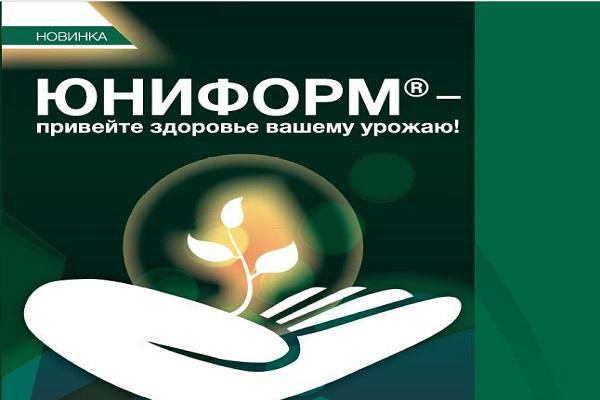
Consumption rate for different plants
For each type of plant, a different amount of fungicide is consumed and therefore it is recommended to familiarize yourself with the consumption rates in advance:
- Tomatoes in the open field. People who grow tomatoes on the street should spend about 500 milliliters per hundred acres.
- Indoor tomatoes. If tomato seedlings are grown in a greenhouse, the consumption of working fluid is halved.
- Cucumbers in the garden. When processing cucumbers in the open field, they consume the same amount of liquid as when spraying tomatoes.
- Cucumbers in the greenhouse. In this case, 200-250 milliliters of funds are spent per hundred acres.
- Potatoes. When growing potato bushes per 100 acres, one and a half liters of fungicide are harvested.
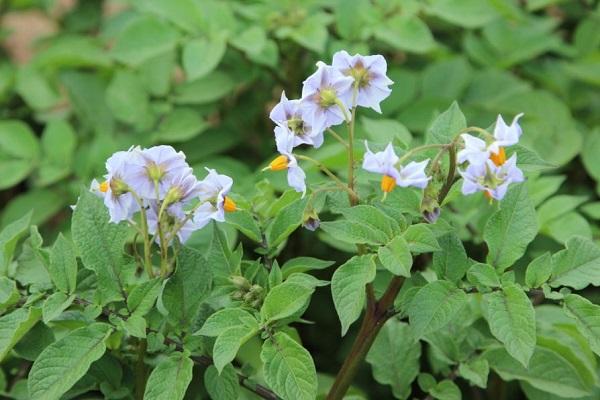
How to prepare a working solution
Before proceeding with the processing of plants, it is necessary to prepare a working solution. It should not be too concentrated and therefore a little fungicide is added to the water. Pour 10-15 milliliters of the product into a liter of cold water. The liquid is then mixed and immediately used to spray the seedlings.
Instructions for the use of the fungicide
To use "Uniform" correctly, you must study the instructions for its use. When growing cucumbers, the product is used once after transplanting young seedlings into open ground. However, if the seedlings begin to ache with rot, re-processing is carried out.
Potatoes are sprayed twice a season. The first treatment is carried out when three true leaves are formed on the bushes. Re-spraying is carried out after two weeks.
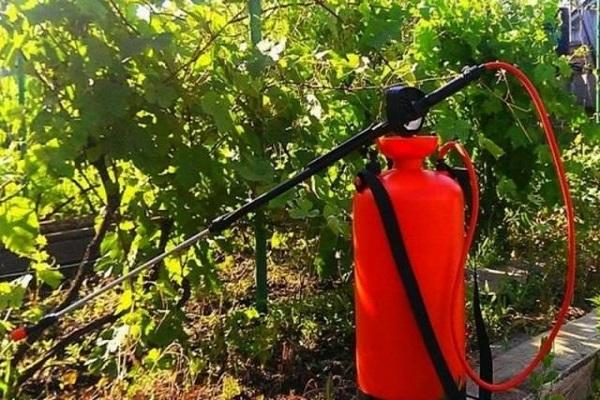
Mechanism of action
Every person who is going to use "Uniform" must understand its mechanism of action. The components of the preparation quickly enter plants and protect them from pathogens that can invade tissues.
The rest of the fungicide, which remains in the ground, also gradually penetrates the plant through the root system.
Drug toxicity
"Uniform" has a second class of toxicity and therefore must be used very carefully. Experts advise using protective equipment so that the substance does not come into contact with the eyes or on the skin surface. When processing seedlings, use rubber gloves, goggles and a respirator to protect the respiratory system.
Compatibility with other products
The fungicide can be used in conjunction with other products. However, before that, you should check whether Uniform is compatible with the selected fungicide preparation.

Terms and conditions of storage of funds
The purchased product has a long shelf life, since it will deteriorate only after three years. However, the working solution is stored several times less. It must be consumed on the day of preparation, since it is stored at room temperature for no more than forty-eight hours.
Are there any analogues
People who do not want to use "Uniform" can use similar tools instead:
- "Tiovit Jet". This drug is sold in the form of a powder, which must be mixed with water before use.
- "Topaz". A versatile fungicide that protects plants from almost any disease.
- Akira. An effective chemical used to treat vegetables to protect against fungal diseases.

Conclusion
"Uniform" is a common fungicidal preparation that is popular among gardeners and gardeners. Before using it, you need to understand the features of the action of the fungicide and study the instructions for its use.
